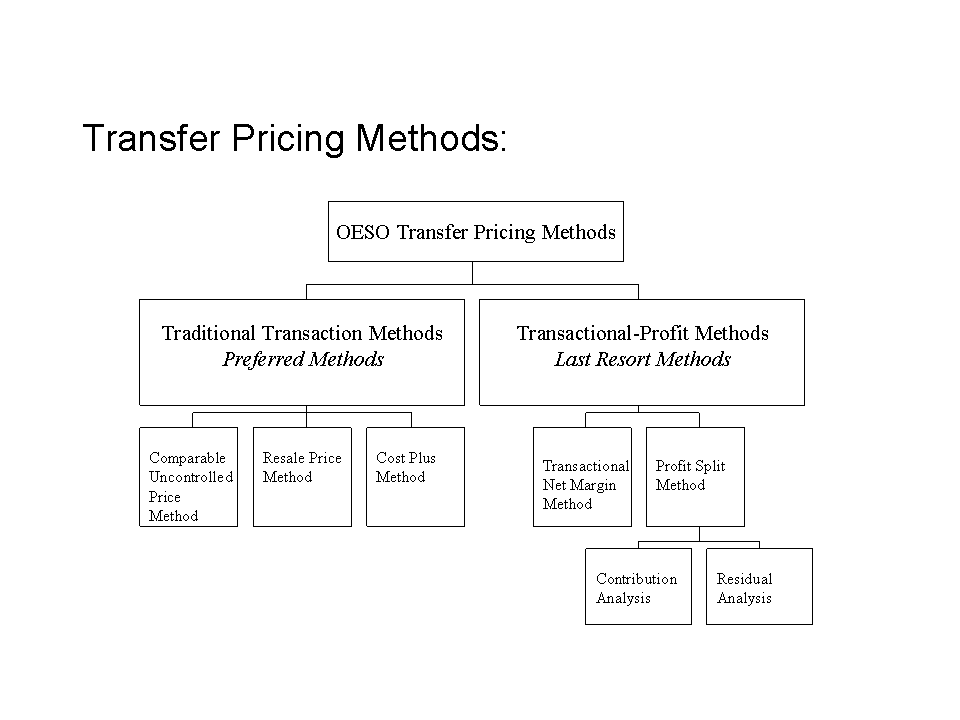Transfer pricing methods allowed in The Netherlands
Which transfer pricing methods are allowed in the Netherlands ?
Starting point for determining the right (at arm's length) price is the recognition that in most cases there is not one proper price, but instead there is a range within which the proper price can be found.
The same applies to the method which is to be applied to determine the proper price. Various methods and approaches are possible, of which one may be better than the other, but it is ultimately the tax payer who determines which method is to be applied.
Whenever the Dutch tax administration undertakes a transfer pricing audit, it should start from the perspective of the method adopted by the taxpayer at the time of the transaction. The starting point is that taxpayers are in principle free to choose a transfer pricing method of their owning preference, provided that the method adopted leads to an arm's length outcome for the transaction in question.
In certain situations, however, some methods will generate better results than others. Although tax payers may be expected to base their choice of a transfer pricing method on the reliability of the method for the particular situation, tax payers are definitely not expected to weigh up the advantages and disadvantages of all of the various methods and then explain why the method that was ultimately adopted generates the best results in the prevailing conditions (i.e. the best method rule).
Certain situations are also suited for a combination of methods. At the same time, tax payers are not obliged to use more than one method. The only obligation resting on the taxpayer is to explain why the decision was taken to adopt the particular method that was adopted. This principle is also laid down in the Dutch corporate tax act.
In general terms the following methods can be used to determine an at arm’s length price:

The Transfer Pricing methods allowed in the Netherlands
The Dutch tax authorities consider the following methods most acceptable:
Market comparison of selling prices (comparable-uncontrolled-price method)
This method compares the internal price with the price charged for similar goods and services in a free market transaction. If comparable prices are available, this method is the best and simplest approach. In many cases, however, no third-party prize will be readily available or cannot be determined for any reason. In those cases, the other methods can offer a solution.
Market comparison of gross profit margin (resale price method)
This method does not actually compare prices, but tries to compare the gross profit percentage of the company against the gross profit percentage that is usual for comparable independent companies.
External information is required when applying this method. You must have access to the gross profit percentages used by comparable companies. Such information is limited available, so in practice this method will rarely be able to offer a solution.
The calculation of the profit as a surcharge on the costs (cost-plus method)
With this method the profit is assessed as a surcharge on costs incurred. The surcharge must match the function of the company and the risks incurred.
In determining the percentage, the tax authorities tend to seek alignment with the percentages applied at comparable companies. This is of course ideal, but in most cases such a comparison will not be possible. What can offer a solution is a functional analysis; what percentage is appropriate in the current market circumstances, taking into account the function and the risks of the company. The cost-plus method is considered the most suitable for non-complex (routine) activities with a low risk profile, such as assembly activities for a third party (no stock or debtor risk).
Market comparison of profit distribution in the total chain (profit-split method)
With this method, the profit is converted as a percentage of the total profit that is achieved within the entire chain within the group. The total profit is then allocated as a percentage to the various companies that are included in the chain. The starting point is the distribution that is customary in a comparable chain between unaffiliated parties.
Even with the application of this method, the tax authorities tend to seek alignment with the percentages used for comparable chains when determining the percentage. This is a rough approach but can lead to good outcomes conceptually. If market comparison is not possible, then a functional analysis can also offer a solution.
Market comparison of net margin in comparable transactions (Transactional Net Margin Method)
This method aims to determine and appropriate (at arm's length) price by benchmarking the net profit margin (as defined) in a transaction to the margins in comparable uncontrolled transactions conducted by the tax payer, or if such data or not available, the margins in such comparable uncontrolled transactions conducted by non-related parties.
The basis for calculating the net profit margin is usually the total costs of the company, but if more appropriate, could also be another indicator, like sales or asset value.
We are gladly prepared to assist you with transfer pricing issues, and the associated documentation and filing requirements.
If you wish to receive more information, please feel free to contact us via e-mail or call us at our office in Amsterdam +31 (0)20 5709440 or Rotterdam +31 (0)10 2010466.
We will make time for you!

